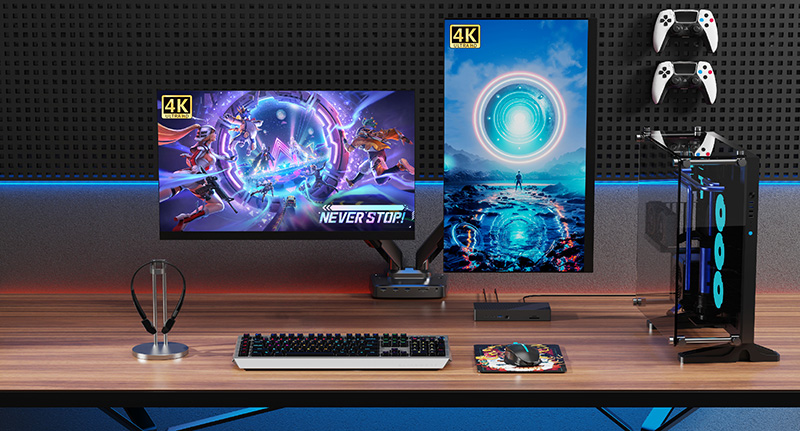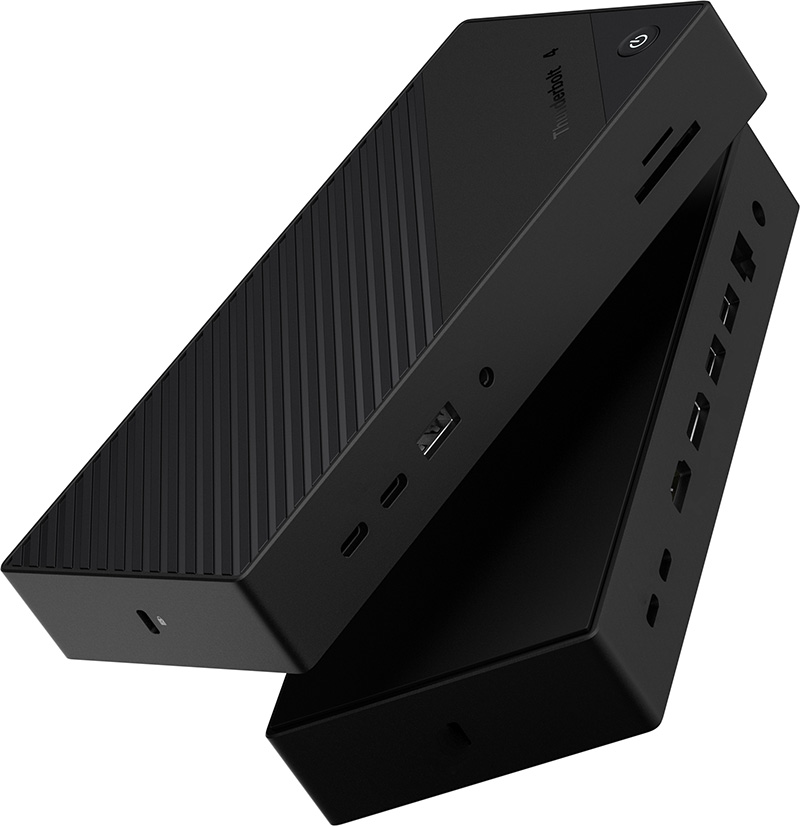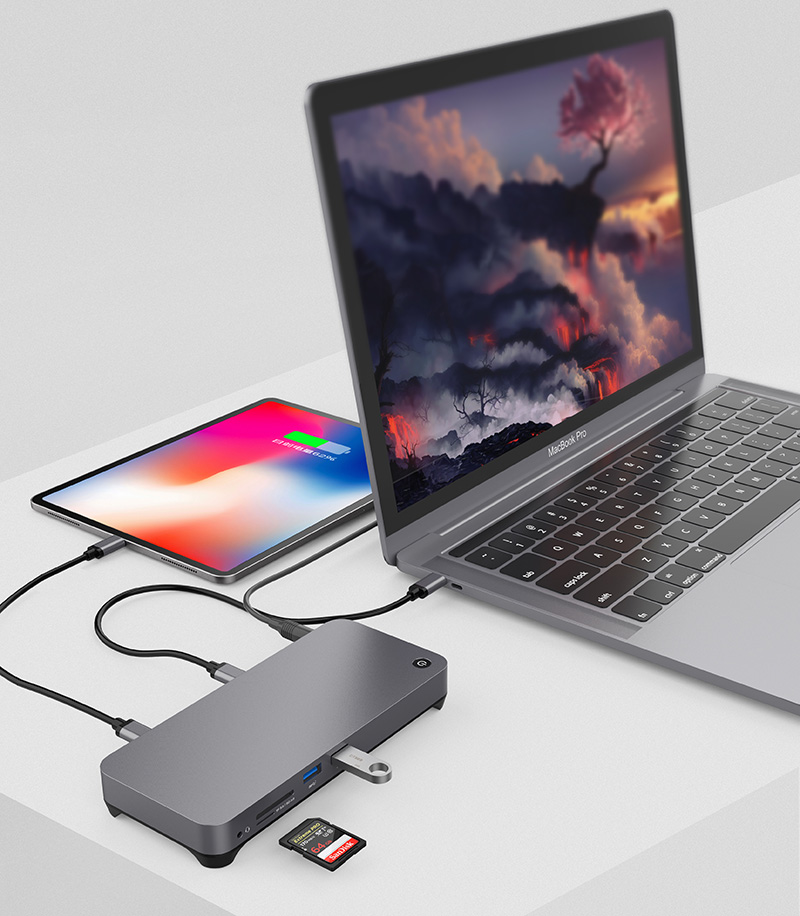Thunderbolt is a high-speed connectivity standard developed by Intel, designed to provide ultra-fast data transmission and versatile connectivity between devices. As the latest generation of this technology, Thunderbolt 5 was officially launched in 2023, inheriting the advantages of its predecessors while achieving a leapfrog upgrade. It not only retains the physical form of the Type-C interface but also boosts transmission bandwidth to new heights through innovative encoding technologies and hardware design. Meanwhile, it is compatible with multiple existing standards, bringing a more powerful and convenient connectivity experience to users.

The most striking highlight of Thunderbolt 5 lies in its significantly enhanced transmission bandwidth. It supports two bandwidth modes: 80Gbps and 120Gbps (the latter requires specific device support). Compared with Thunderbolt 4's 40Gbps, this upgrade means the data transmission speed is doubled or even tripled. For example, transferring 4K video footage only takes a few seconds, greatly improving the work efficiency of content creators.
Thunderbolt 5 continues the multi - protocol compatibility feature of its predecessors and can simultaneously support multiple protocols such as PCIe 5.0, USB4 2.0, and DisplayPort 2.1. This allows users to connect various peripherals such as monitors, storage devices, and docking stations through a single interface, greatly simplifying the complexity of device connection.
Thunderbolt 5's support for display technology has reached a new height. It supports the simultaneous output of two 8K 60Hz monitors or four 4K 120Hz monitors, meeting the requirements of professional designers and film and television production personnel for high - resolution and high - refresh - rate displays. In addition, it also supports the DSC (Display Stream Compression) technology in the latest DisplayPort 2.1 standard, further improving video transmission efficiency.
Thunderbolt 5 supports a maximum power transmission of 240W, which can provide fast charging for devices such as laptops and tablets. For high - power mobile workstations, this means that there is no need for an additional power adapter, and a single cable can solve both data transmission and power supply problems.
Thunderbolt 5 introduces intelligent data routing technology, which can automatically allocate bandwidth according to device requirements. For example, when connecting a storage device and a monitor at the same time, the system will preferentially allocate sufficient bandwidth to the latency - sensitive monitor to ensure a smooth visual experience without affecting the data transmission speed.

| Feature | Thunderbolt 3 | Thunderbolt 4 | Thunderbolt 5 |
| Maximum Transmission Bandwidth | 40Gbps | 40Gbps | 80/120Gbps |
| Maximum Power Delivery | 100W | 100W | 240W |
| Number of Simultaneously Supported Monitors | 2* 4K or 1* 8K | 2* 4K or 1* 8K | 4* 4K or 2* 8K |
| Data Protocol Compatibility | PCIe 3.0, USB3.1 | PCIe 4.0, USB4 | PCIe 5.0, USB4 2.0 |
| Display Protocol Compatibility | DisplayPort 1.4 | DisplayPort 1.4 | DisplayPort 2.1 |
As can be clearly seen from the table, Thunderbolt 5 has achieved significant improvements in bandwidth, power delivery, and display support. Compared with Thunderbolt 3, its bandwidth has increased by 2 - 3 times, the power delivery capacity has doubled, and the display support is more flexible; compared with Thunderbolt 4, although the two have the same physical interface, Thunderbolt 5 has achieved a qualitative leap in performance, especially in multi - device connection and high - resolution display.
For professionals such as video editors, 3D designers, and photographers, the ultra - high bandwidth and multi - monitor support capabilities of Thunderbolt 5 are a great boon. They can quickly transfer large files and use multiple high - resolution monitors for fine - grained creative work at the same time, greatly improving work efficiency.
Gamers can take advantage of the high - bandwidth characteristics of Thunderbolt 5 to improve the graphics performance of their laptops through an external graphics dock and obtain a smoother gaming experience. In addition, multi - monitor support can also meet the needs of gamers for an immersive gaming environment.
In an enterprise environment, Thunderbolt 5 can simplify device management. Connecting various peripherals through a single interface reduces the number of cables and lowers maintenance costs. At the same time, the high - speed data transmission capability also helps to improve the internal data processing efficiency of the enterprise.
For business people who often need to work in different locations, the versatility of Thunderbolt 5 is particularly important. They can quickly connect peripherals such as monitors, keyboards, and mice through a single docking station to set up a temporary office environment and achieve efficient mobile office.

First, make sure that your computer or other host devices support the Thunderbolt 5 interface. At present, relatively few devices support Thunderbolt 5, but with the popularization of the technology, it is expected that the new products of mainstream computer manufacturers will fully support this standard in 2025.
Choose the appropriate Thunderbolt 5 product according to your own usage scenario. If it is for professional creation, you should give priority to docking stations that support high bandwidth and multi - monitor output; if it is for gaming, you should pay attention to whether the product supports the external graphics dock function; if it is for mobile office, you can choose a lightweight docking station.
When choosing a Thunderbolt 5 product, pay attention to its specific performance parameters, such as whether the transmission bandwidth is 80Gbps or 120Gbps, the maximum supported power delivery, and the resolution and refresh rate of the monitor output. These parameters will directly affect the user experience of the product.
Different Thunderbolt 5 docking stations or other products may provide different numbers and types of interfaces. Before purchasing, check whether the product provides enough USB interfaces, HDMI interfaces, SD card readers, etc. according to your own needs to meet the requirements of connecting various peripherals.
Finally, consider the brand and price of the product. Products from well - known brands usually have better quality and after - sales service, but the price may be relatively high. Users can make a choice according to their own budget and trust in the brand.